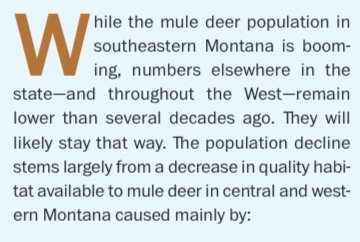BuzzH
Well-known member
You think it's just one district?No, I’m not the expert. Not sure why you’re taking this approach.
The point I was trying to make was just because data from one district is a mess doesn’t necessarily extrapolate to neighboring districts. Which, then confounds everything even more.
I have little faith in Montana’s harvest data. I do have faith in SOME of the population data. I have zero faith in Helena’s directives.
I know it's not.





